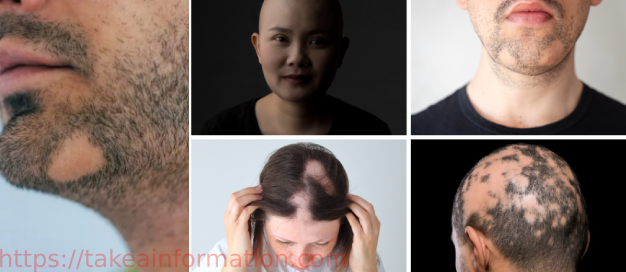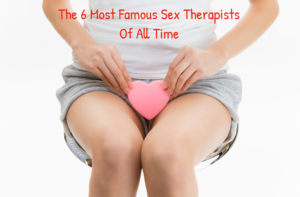Alopecia areata is a common autoimmune condition that causes unpredictable hair loss. Despite its prevalence, many misconceptions surround this condition. In this article, we delve into the intricacies of alopecia areata, exploring its causes, available treatments, and strategies for coping with its physical and emotional impact.
What is Alopecia Areata?
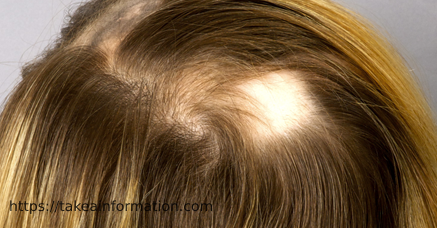
Alopecia areata is a common autoimmune disorder that causes hair loss, usually in small, round patches on the scalp or other parts of the body. It occurs when the immune system mistakenly attacks hair follicles, leading to hair loss. The exact cause is not fully understood, but genetic factors, environmental triggers, and immune system dysfunction are believed to play a role.
In some cases, alopecia areata can progress to total hair loss on the scalp (alopecia totalis) or complete loss of body hair (alopecia universalis), but this is relatively rare. The condition can affect people of any age, although it often begins in childhood or young adulthood.
What are the symptoms of alopecia areata?

The primary symptom of alopecia areata is hair loss, typically occurring in small, round patches on the scalp. These bald patches are usually smooth and may be surrounded by normal-looking hair. In some cases, the hair loss may extend beyond the scalp to other areas of the body, such as the eyebrows, eyelashes, beard area, or body hair.
Other symptoms that may accompany alopecia areata include:
- Tingling or itching in the affected area before hair loss occurs.
- Changes in the texture or appearance of the nails, such as pitting or ridges.
- Exclamation mark hairs: short, broken hairs that taper at the base, often found around the edges of bald patches.
- Complete loss of scalp hair (alopecia totalis) or loss of all body hair (alopecia universalis) in more severe cases.
It’s important to note that alopecia areata doesn’t usually cause any other physical symptoms or discomfort, but the emotional impact of hair loss can be significant for some individuals.
Is alopecia areata hereditary?
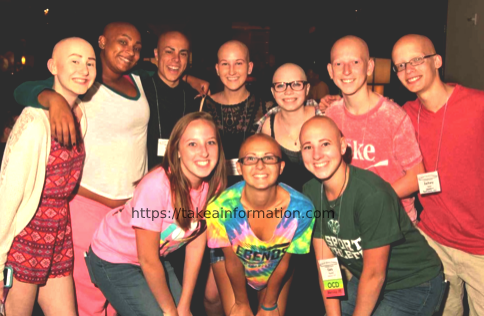
Alopecia areata can have a genetic component, meaning it tends to run in families. Individuals with a family history of autoimmune diseases or alopecia areata are at a higher risk of developing the condition themselves. However, the inheritance pattern of alopecia areata is complex and not fully understood.
It’s believed that multiple genes may contribute to the development of alopecia areata, and environmental factors likely play a role as well. Having a family member with alopecia areata increases the likelihood of developing the condition, but it doesn’t guarantee it.
Researchers continue to study the genetic and environmental factors involved in alopecia areata to better understand its causes and develop more effective treatments.
Can alopecia areata go away?
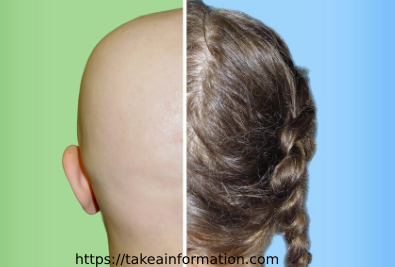
Yes, alopecia areata can go away on its own in some cases, but it can also be a chronic condition with unpredictable patterns of hair loss and regrowth. The course of alopecia areata varies from person to person.
In some individuals, hair may regrow spontaneously within a few months, even without treatment. However, the hair may fall out again at a later time. In other cases, the hair loss may be more persistent, or additional patches of hair loss may develop over time.
Treatment options are available to help promote hair regrowth and manage the condition, but there is no cure for alopecia areata. Treatments such as corticosteroid injections, topical medications, minoxidil, and immunotherapy can be effective for some people in stimulating hair regrowth. However, responses to treatment can vary, and it may take time to see results.
It’s essential for individuals with alopecia areata to work closely with a healthcare provider or dermatologist to develop a personalized treatment plan based on their specific needs and preferences.
What is the trigger of alopecia areata?
The exact trigger of alopecia areata is not fully understood, but it is believed to involve a combination of genetic, environmental, and immune system factors.
Genetic Factors:
There is evidence to suggest that genetics plays a role in the development of alopecia areata. Individuals with a family history of autoimmune diseases or alopecia areata are at a higher risk of developing the condition themselves.
Autoimmune Response:
Alopecia areata is considered an autoimmune disorder, meaning the immune system mistakenly attacks healthy cells in the body. In the case of alopecia areata, the immune system targets the hair follicles, leading to hair loss.
Environmental Triggers:
While the underlying cause of the immune system dysfunction in alopecia areata is not fully understood, various environmental factors may trigger or exacerbate the condition. These triggers can include physical or emotional stress, certain infections, hormonal changes, and environmental toxins.
Other Factors:
Some research suggests that factors such as psychological stress, trauma, or certain medications may contribute to the onset or worsening of alopecia areata in susceptible individuals. However, more research is needed to fully understand these relationships.
It’s important to note that not everyone with alopecia areata will have a clear trigger or identifiable cause for their condition. The interplay of genetic predisposition, immune system dysfunction, and environmental factors likely varies from person to person.
What is the major cause of alopecia?
Alopecia, or hair loss, can have various causes depending on the type of alopecia.
Alopecia Areata:
This type of hair loss is primarily caused by an autoimmune reaction, where the body’s immune system mistakenly attacks the hair follicles, leading to hair loss. The exact trigger for this autoimmune response is not fully understood but likely involves a combination of genetic, environmental, and immune system factors.
Androgenetic Alopecia:
Also known as male-pattern or female-pattern baldness, this type of hair loss is primarily genetic and hormonal. It is more common in men and is characterized by a gradual thinning of hair on the scalp, usually starting at the temples or crown.
Telogen Effluvium:
This type of hair loss is often triggered by significant physical or emotional stress, illness, surgery, childbirth, or certain medications. It disrupts the normal hair growth cycle, causing more hairs to enter the resting (telogen) phase and eventually fall out.
Traction Alopecia:
This type of hair loss occurs when hair is pulled tightly for an extended period, causing damage to the hair follicles. It is commonly seen in individuals who frequently wear tight hairstyles such as braids, ponytails, or extensions.
Chemotherapy-induced Alopecia:
Certain chemotherapy drugs can cause hair loss by interfering with the rapidly dividing cells in the hair follicles. This type of hair loss is usually temporary, and hair typically regrows after treatment is completed.
Other less common causes of alopecia include fungal infections of the scalp (such as tinea capitis), nutritional deficiencies, autoimmune diseases other than alopecia areata, and certain medical conditions such as thyroid disorders.
Determining the specific cause of alopecia often requires a thorough evaluation by a healthcare provider or dermatologist, including a medical history, physical examination, and sometimes additional tests or procedures. Treatment options can vary depending on the underlying cause of hair loss.
Can stress cause alopecia?
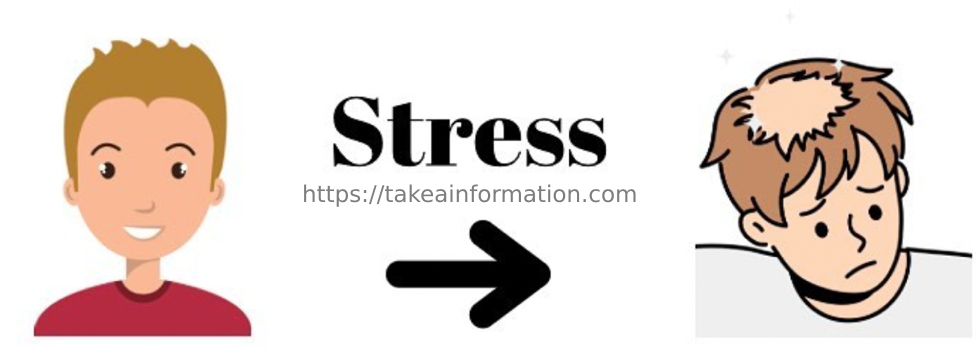
Yes, stress can contribute to alopecia, particularly a type of hair loss called telogen effluvium.
Telogen effluvium occurs when a significant physical or emotional stressor disrupts the normal hair growth cycle, causing a larger number of hair follicles to enter the resting (telogen) phase prematurely. This results in increased shedding of hair, leading to noticeable thinning or hair loss.
Stressful events such as emotional trauma, major surgery, severe illness, childbirth, or extreme weight loss can trigger telogen effluvium. Additionally, chronic stress, anxiety, or depression can also contribute to hair loss over time.
While the exact mechanisms linking stress to telogen effluvium are not fully understood, it is believed that stress hormones, such as cortisol, may play a role in disrupting the hair growth cycle.
It’s important to note that while stress can contribute to hair loss, it is usually not the sole cause. Other factors, such as genetics, hormonal imbalances, medications, and underlying medical conditions, can also play a role in hair loss. If you are experiencing hair loss and suspect that stress may be a contributing factor, it’s essential to consult with a healthcare provider or dermatologist for an accurate diagnosis and appropriate treatment recommendations.
What age does alopecia start?
Alopecia can start at any age, from infancy to old age, but it is most commonly seen in individuals under the age of 30.
Alopecia areata, specifically, often begins during childhood or early adulthood, with the peak onset occurring in the late teens to early twenties. However, it can also develop later in life. Androgenetic alopecia, another common type of hair loss, typically starts to become noticeable in men during their 20s or 30s, while it tends to occur a bit later in women, often starting in their 40s or 50s.
The age of onset can vary widely from person to person, and factors such as genetics, hormonal changes, and environmental triggers may influence when alopecia starts to develop. If you are experiencing hair loss at any age, it’s important to consult with a healthcare provider or dermatologist for an evaluation and appropriate management.
Can alopecia areata be cured?
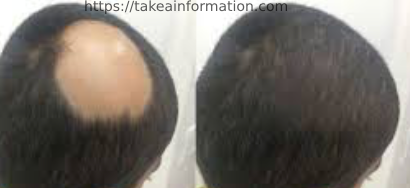
There is currently no cure for alopecia areata, but various treatment options are available to manage the condition and promote hair regrowth. Treatment effectiveness can vary depending on the individual and the extent of hair loss. Some people may experience spontaneous hair regrowth without treatment, while others may require ongoing management.
What treatments are available for alopecia areata?
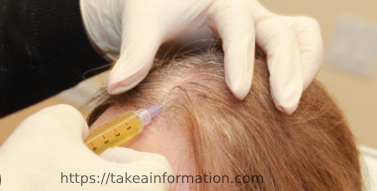
Several treatments are available for alopecia areata, although none are universally effective for all individuals. Treatment options aim to stimulate hair regrowth, suppress the immune system’s attack on hair follicles, or both. Some common treatments for alopecia areata include:
1. Corticosteroid Injections:
Corticosteroids are injected directly into the bald patches on the scalp to reduce inflammation and suppress the immune response. This treatment can help stimulate hair regrowth in some individuals.
2. Topical Corticosteroids:
Corticosteroid creams, ointments, or solutions can be applied directly to the scalp to reduce inflammation and promote hair regrowth. These are often used in milder cases of alopecia areata.
3. Topical Immunotherapy:
Chemicals such as diphencyprone (DPCP) or squaric acid dibutylester (SADBE) are applied to the scalp to provoke an allergic reaction, which can help stimulate hair regrowth. This treatment is typically performed in a dermatologist’s office.
4. Minoxidil (Rogaine):
Minoxidil is a topical medication that is applied directly to the scalp to stimulate hair follicles and promote hair regrowth. It is available over-the-counter and may be used alone or in combination with other treatments.
5. Anthralin:
Anthralin is a topical medication that is applied to the scalp to reduce inflammation and stimulate hair regrowth. It is typically used in combination with other treatments and must be applied under medical supervision due to potential side effects.
6. JAK Inhibitors:
anus kinase (JAK) inhibitors are a newer class of medications that work by suppressing the immune system’s attack on hair follicles. These medications, such as tofacitinib and ruxolitinib, are taken orally and have shown promise in some studies for treating alopecia areata.
7. Hair Transplantation:
In cases of more extensive hair loss, hair transplantation may be an option to transplant healthy hair follicles from other areas of the scalp to the bald patches. This is typically considered in cases of alopecia totalis or alopecia universalis.
It’s important for individuals with alopecia areata to work closely with a healthcare provider or dermatologist to develop a personalized treatment plan based on their specific needs and preferences. Treatment effectiveness can vary from person to person, and it may take time to find the most suitable approach.
What is the best cure for alopecia?
As of now, there is no universally recognized “best cure” for alopecia areata, as the effectiveness of treatments can vary widely from person to person. Additionally, alopecia areata is a complex condition with no one-size-fits-all solution. What works well for one individual may not work as effectively for another.
Treatment options for alopecia areata aim to stimulate hair regrowth, suppress the immune system’s attack on hair follicles, or both. Some commonly used treatments include corticosteroid injections, topical corticosteroids, minoxidil (Rogaine), topical immunotherapy, JAK inhibitors, and hair transplantation.
The choice of treatment depends on factors such as the extent and severity of hair loss, the individual’s medical history, preferences, and response to previous treatments. It’s essential for individuals with alopecia areata to work closely with a healthcare provider or dermatologist to develop a personalized treatment plan tailored to their specific needs.
In some cases, a combination of treatments may be more effective than using a single therapy alone. Additionally, ongoing research is being conducted to explore new treatments and better understand the underlying mechanisms of alopecia areata, with the ultimate goal of improving outcomes for individuals affected by the condition.
Does alopecia hair grow back?
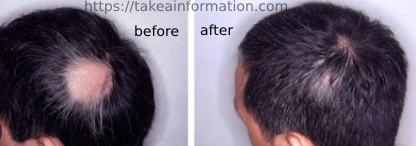
Yes, in many cases, hair lost due to alopecia areata can grow back. The regrowth of hair can occur spontaneously without any treatment, especially in cases of mild alopecia areata. However, the timeline and extent of hair regrowth can vary widely from person to person.
In some individuals, hair may regrow within a few months, either in the same bald patches or in new areas of the scalp. In other cases, hair regrowth may be more gradual or incomplete, and some individuals may experience cycles of hair loss and regrowth over time.
While hair regrowth is possible, it’s important to note that it may not happen for everyone, and the condition can be unpredictable. Some individuals may experience persistent or recurrent hair loss despite treatment efforts.
Treatment options for alopecia areata aim to stimulate hair regrowth and manage the condition, but responses can vary, and there is no guarantee of success. It’s essential for individuals with alopecia areata to work closely with a healthcare provider or dermatologist to develop a personalized treatment plan based on their specific needs and preferences.
How I grew my hair back after alopecia?
Growing hair back after alopecia areata can be a challenging and sometimes unpredictable process, as the effectiveness of treatments can vary widely from person to person. However, there are several strategies and treatments that individuals may consider to promote hair regrowth:
1. Consult with a Healthcare Provider:
If you haven’t already, it’s essential to consult with a healthcare provider or dermatologist who can evaluate your condition, provide a diagnosis, and recommend appropriate treatment options tailored to your specific needs.
2. Consider Treatment Options:
There are various treatments available for alopecia areata, including corticosteroid injections, topical corticosteroids, minoxidil (Rogaine), topical immunotherapy, JAK inhibitors, and others. Your healthcare provider can help determine which treatment or combination of treatments may be most suitable for you.
3. Follow Treatment Recommendations:
Once you and your healthcare provider have developed a treatment plan, it’s important to follow their recommendations closely. This may include regular appointments for injections or monitoring, consistent use of topical medications, or taking oral medications as prescribed.
4. Be Patient:
Hair regrowth can take time, and it’s essential to be patient and persistent with your treatment regimen. It may take several months or longer to see noticeable results, and some individuals may experience cycles of hair loss and regrowth over time.
5. Manage Stress:
Stress management techniques such as relaxation exercises, meditation, yoga, or counseling may help reduce stress levels, which can be beneficial for overall health and well-being, including hair health.
6. Maintain a Healthy Lifestyle:
Eating a balanced diet, getting regular exercise, staying hydrated, and practicing good hair care habits can help support overall hair health and may promote hair regrowth.
7. Consider Support Groups:
Connecting with others who have experienced alopecia areata can provide valuable support, encouragement, and coping strategies. Support groups, online forums, or community organizations may offer opportunities to connect with others who understand what you’re going through.
It’s important to remember that there is no guaranteed “cure” for alopecia areata, and responses to treatment can vary. However, by working closely with a healthcare provider, staying informed about treatment options, and taking steps to support overall health and well-being, you can take proactive steps toward promoting hair regrowth and managing the condition effectively.
How long does alopecia areata take to heal?
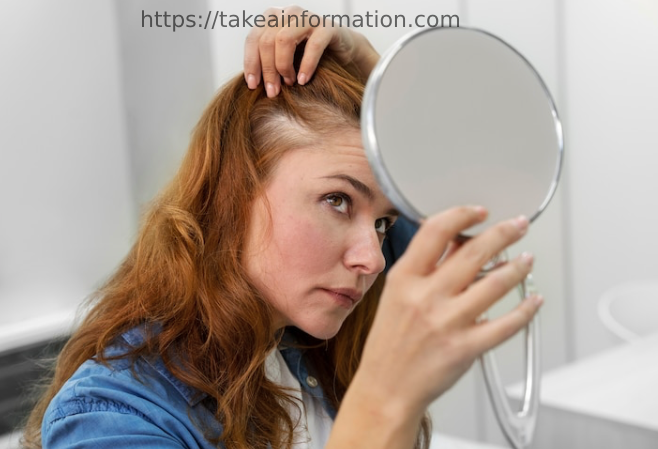
The healing timeline for alopecia areata can vary widely from person to person. In some cases, hair may regrow spontaneously within a few months without any treatment. However, for others, the condition may persist for an extended period, and hair regrowth may be incomplete or unpredictable.
The timeline for healing and hair regrowth can depend on several factors, including:
Severity of Hair Loss:
Individuals with mild cases of alopecia areata may experience quicker and more complete hair regrowth compared to those with more extensive or severe hair loss.
Treatment Response:
The effectiveness of treatments can vary, and some individuals may respond more favorably to certain treatments than others. It may take time to find the most suitable treatment or combination of treatments for an individual’s specific condition.
Underlying Factors:
Factors such as genetics, overall health, immune system function, and response to stress can also influence the healing timeline for alopecia areata.
Individual Differences:
Every individual’s experience with alopecia areata is unique, and the course of the condition can vary widely from person to person.
In general, it’s essential to be patient and persistent with treatment efforts, as hair regrowth can take time. Some individuals may experience cycles of hair loss and regrowth over time, while others may achieve more consistent hair regrowth with ongoing treatment and management of the condition.
How does alopecia areata affect mental health?
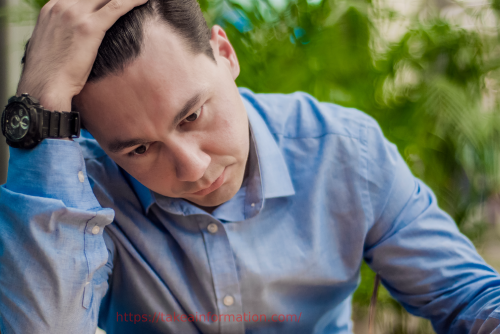
Alopecia areata can have a significant impact on mental health and emotional well-being. The visible nature of hair loss, unpredictable course of the condition, and potential for changes in appearance can lead to various psychological and emotional challenges for individuals affected by alopecia areata. Some ways in which alopecia areata can affect mental health include:
1. Decreased Self-Esteem:
Hair loss can have a profound effect on self-esteem, as it may alter an individual’s appearance and self-perception. This change in physical appearance can lead to feelings of self-consciousness, embarrassment, and diminished self-worth.
2. Social Anxiety and Isolation:
Fear of judgment or negative reactions from others may cause individuals with alopecia areata to withdraw from social interactions or avoid certain situations, such as going out in public without wearing a hat or wig. This can lead to feelings of loneliness, social isolation, and difficulty forming or maintaining relationships.
3. Depression and Anxiety:
Living with a chronic condition like alopecia areata can increase the risk of developing depression and anxiety. The stress of coping with hair loss, uncertainty about the future course of the condition, and negative self-perceptions can contribute to feelings of sadness, hopelessness, and anxiety.
4. Impact on Quality of Life:
Alopecia areata can affect various aspects of daily life, including work, school, relationships, and leisure activities. The emotional distress and practical challenges associated with managing the condition can diminish overall quality of life and impair functioning in different areas.
5. Body Image Issues:
Hair loss can lead to dissatisfaction with one’s body image and feelings of inadequacy or unattractiveness. Individuals may struggle with accepting changes in their appearance and may experience body dysmorphia or obsessive thoughts about their hair loss.
It’s important for individuals with alopecia areata to seek support from healthcare providers, mental health professionals, and support groups to address the emotional impact of the condition. Counseling, therapy, peer support, and self-care strategies can help individuals cope with the psychological challenges of alopecia areata and improve their overall well-being.
Conclusion:
Alopecia areata is a complex autoimmune condition that affects millions of people worldwide. By understanding its causes, symptoms, available treatments, and coping strategies, individuals with alopecia areata can better manage the condition and improve their quality of life. It is crucial to seek support from healthcare professionals and connect with others who understand the challenges of living with alopecia areata. With ongoing research and advancements in treatment, there is hope for improved outcomes and better support for individuals affected by this condition.
If you are experiencing alopecia areata, it’s important to consult with a healthcare provider or dermatologist who can provide a proper diagnosis, evaluate your condition, and recommend appropriate treatment options tailored to your specific needs. They can also provide guidance and support throughout the healing process.

